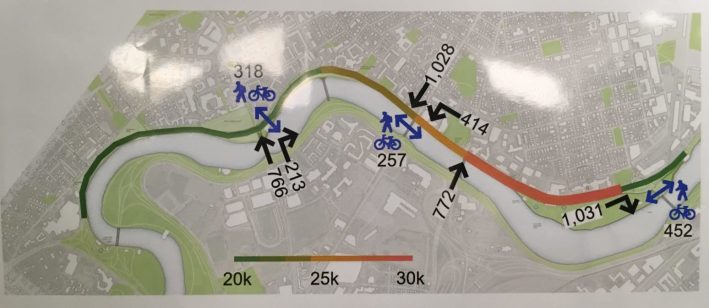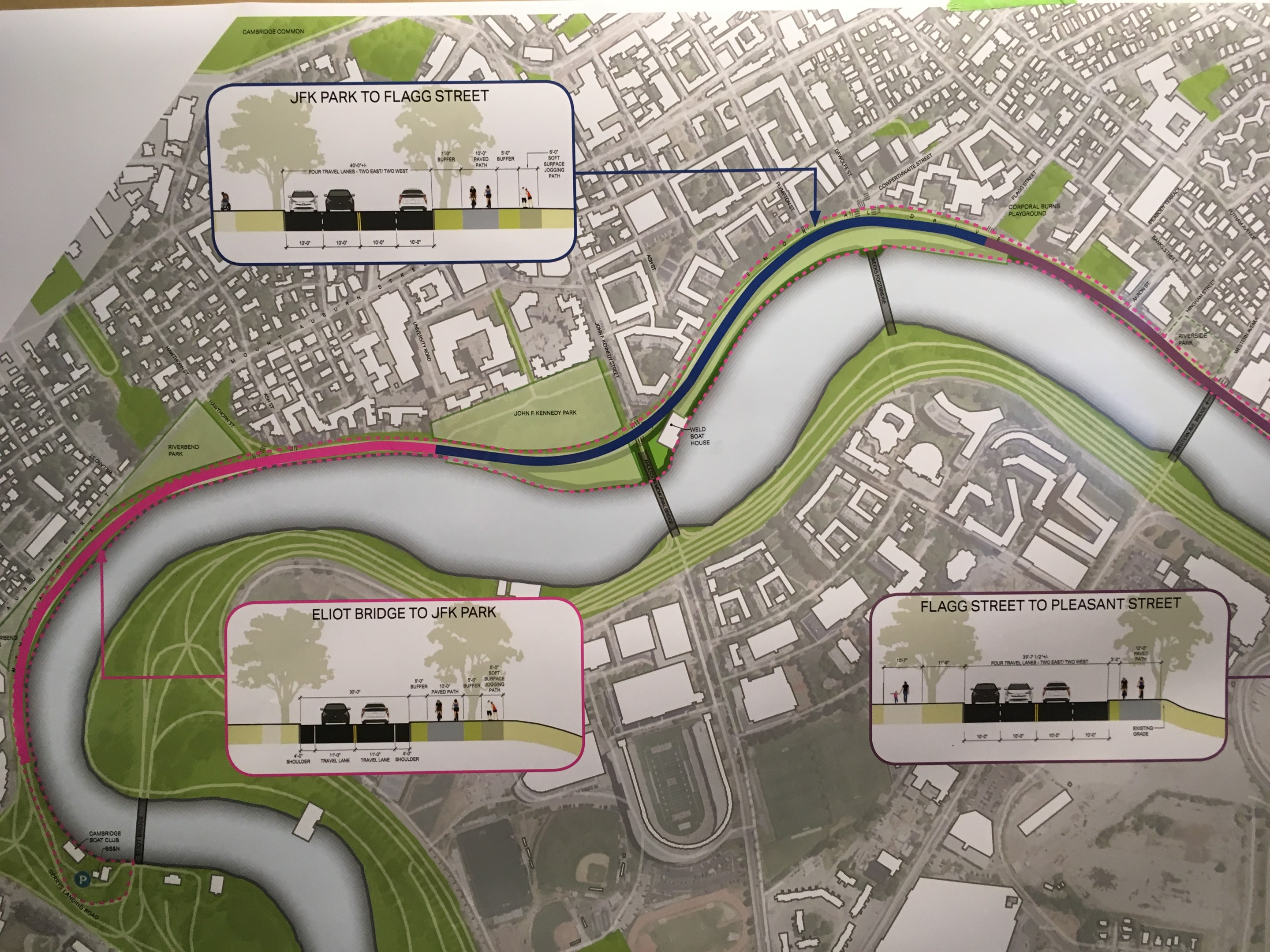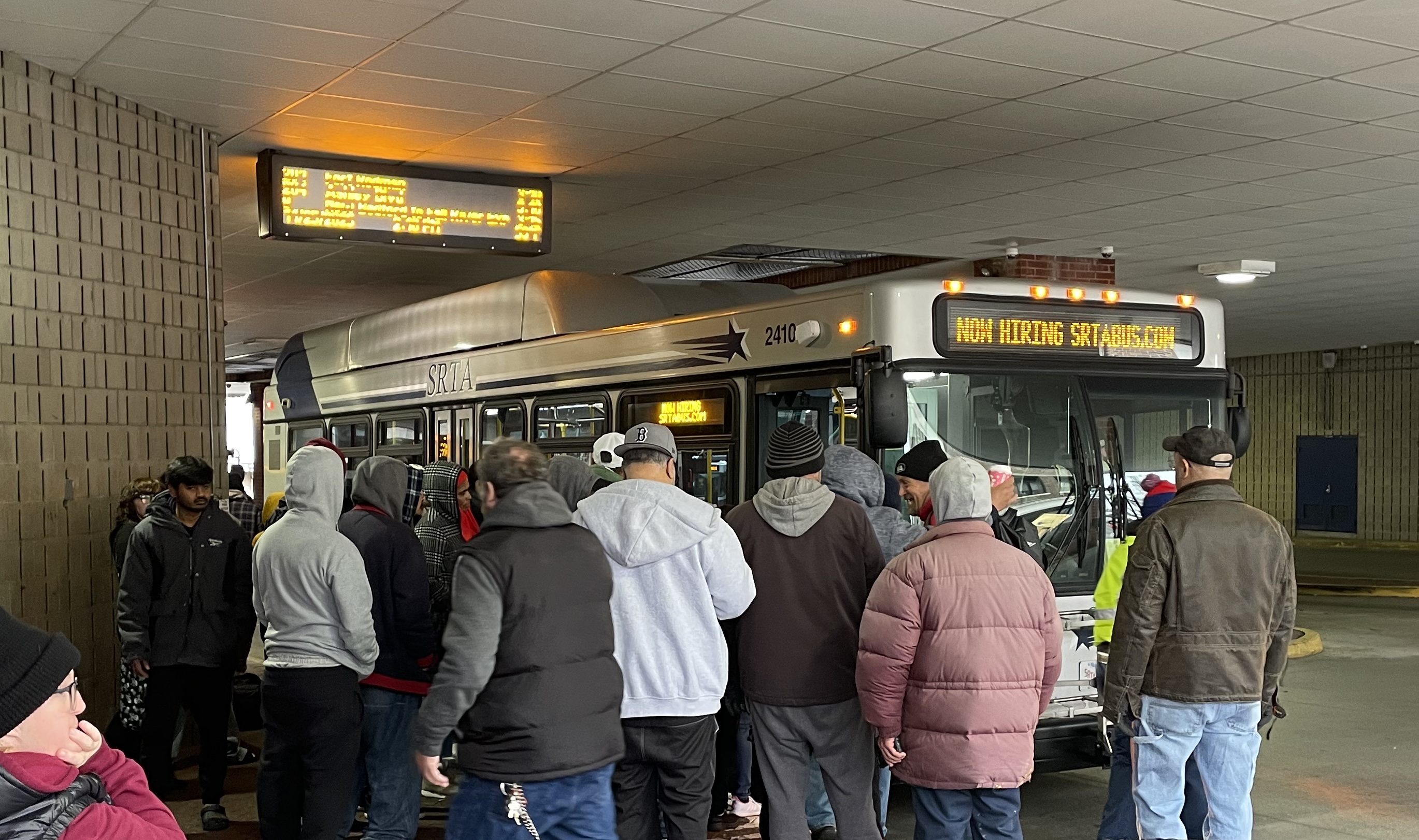On Tuesday evening in Cambridge, several dozen neighbors, local politicians and transportation advocates turned out to hear the state's conceptual improvement plans for the "Memorial Drive Phase III" project, which would rebuild the roadways and paths on Cambridge's riverfront from Eliot Bridge near Mount Auburn Hospital to the rotary at the foot of the Boston University Bridge.
Thanks to a quirk of bureaucracy, Memorial Drive is under the jurisdiction neither of the City of Cambridge, which is aggressively making more room for bikes and pedestrians in the rest of the city, nor of the state Department of Transportation. Instead, the agency in charge of the roadway is the state Department of Conservation and Recreation (DCR), which maintains Charles River-fronting "parkways" like Memorial Drive and Soldiers Field Road.
Unfortunately, the agency's track record in remaking its parkways into safer, people-friendly streets is decidedly mixed (more than one attendee at Tuesday's meeting joked that "DCR" should stand for "Department of Congestion and Roads"). The proposals they presented Tuesday evening made some additional room for the busy bike and pedestrian pathway throughout the length of the study area, but the concept would keep the bulk of the state's riverfront parkland under four lanes of asphalt.
The project team proposes a significant road diet in the westernmost 0.75 miles of the project study area. From Eliot Bridge to John F. Kennedy Memorial Park, near Harvard Square, where traffic volumes are relatively low, Memorial Drive would be cut from four lanes to two. That will make room for a new paved path for cyclists plus a separate stone-dust pathway for joggers and pedestrians.
But in the busiest and most space-constrained section of Memorial Drive, between Flagg Street and Pleasant Street in Cambridgeport, the current pathway will only get a modest widening in order to preserve four lanes of traffic for motor vehicles. Under the DCR proposal, bikes and pedestrians would share a 12-foot pathway in tight proximity to a four-lane highway.

The project team claimed that all four lanes of traffic needed to remain in order to accommodate traffic congestion, which, under their study assumptions, would remain at present-day levels indefinitely, contrary to the goals and track record of Cambridge's traffic-reduction policies.
"I think it's unfortunate that DCR has consistently represented the status quo as a foregone conclusion, and refuses to acknowledge its own potential role in reducing congestion and emissions in the city and the state," said Alex Auriema, a Jamaica Plain resident who's been organizing a loose alliance of advocates to rally for fewer car lanes on Memorial Drive and more space for pathways, parkland and riparian habitat.
By designing a roadway under the assumption that traffic will remain at present-day levels indefinitely, DCR's project team appears to be at odds with its own administration's goals to control traffic and reduce transportation emissions. The conceptual design also clashes with street redesign projects and policies in the rest of Cambridge, where numerous motor-vehicle lanes have been sacrificed in recent years to make room for new pedestrian plazas and a growing network of on-street bikeways.
Jeff Parenti, the DCR's Deputy Chief Engineer, acknowledged that "We want traffic volumes to decrease, but how we change human behavior, that's the tough part... One way to do that is to shift modes. Cambridge has been excellent at that. They win the prize. I used to work for the city, so I know it works. That culture needs to spread regionally, and once that happens, then, we, the Commonwealth and the traveling public, can feel more comfortable shrinking the road as we've done in Kendall Square, Central Square."
Of course, part of the success in Kendall Square and Central Square came from leadership that was willing to make more room for bikes and pedestrians by re-allocating road space from motor vehicles. I asked Parenti why, if he can recognize and praise Cambridge's success, his agency wouldn't want to follow those successful examples?
"We can. We have the option to, and that's why we're here tonight, to hear from people," said Parenti. "Obviously we want to reduce emissions, and part of that is changing human behavior. We can try to do that with what we build, but we don't know how human beings will respond. Will they respond the way we want them to, by riding a bike or walking or taking transit, or will they divert off the parkway onto neighborhood streets? We don't know."
Update: a copy of the evening's presentation is now available online.
Public comments and feedback on the concept are being solicited online until July 25th at www.mass.gov/dcr/public-comment.






